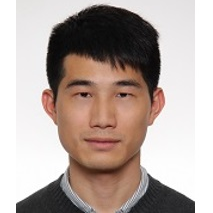Crowd-Sourced Data and Deep Learning in Remote Sensing: Methods and Applications
A special issue of Applied Sciences (ISSN 2076-3417). This special issue belongs to the section "Earth Sciences".
Deadline for manuscript submissions: closed (27 April 2024) | Viewed by 12893
Special Issue Editors
Interests: pattern recognition; land cover mapping; global/regional urbanization
Interests: land cover and land use; change detection; cellular automata; GIS applications
Interests: web service discovery and WebGIS development; spatio-temporal crowd-sourced data mining; remote sensing image retrieval; land cover mapping
Special Issues, Collections and Topics in MDPI journals
Special Issue Information
Dear Colleagues,
Although we are living in a global Big Data era, the challenges to intelligent satellite image interpretation still remain. The advances in deep learning have significantly improved image processing capacity. The number and variety of training sample data, however, is insufficient for processing the large volume of multi-source satellite images. From a different research perspective, the evolution and exponential growth of modern information technology (e.g., smart mobile devices) has expedited the availability of large amounts of data, the so-called crowd-sourced data. The crowd-sourced data produced by people worldwide, either accidentally or intentionally, is proven to be an essential and cost-effective tool in a wide range of practical applications, such as training sample collection. To date, only a few studies have examined the integrated applications of crowd-sourced data and deep learning in the community of remote sensing, and thus further studies are necessary in order to address this topic.
Dr. Zelang Miao
Prof. Dr. Hao Wu
Dr. Dongyang Hou
Guest Editors
Manuscript Submission Information
Manuscripts should be submitted online at www.mdpi.com by registering and logging in to this website. Once you are registered, click here to go to the submission form. Manuscripts can be submitted until the deadline. All submissions that pass pre-check are peer-reviewed. Accepted papers will be published continuously in the journal (as soon as accepted) and will be listed together on the special issue website. Research articles, review articles as well as short communications are invited. For planned papers, a title and short abstract (about 100 words) can be sent to the Editorial Office for announcement on this website.
Submitted manuscripts should not have been published previously, nor be under consideration for publication elsewhere (except conference proceedings papers). All manuscripts are thoroughly refereed through a single-blind peer-review process. A guide for authors and other relevant information for submission of manuscripts is available on the Instructions for Authors page. Applied Sciences is an international peer-reviewed open access semimonthly journal published by MDPI.
Please visit the Instructions for Authors page before submitting a manuscript. The Article Processing Charge (APC) for publication in this open access journal is 2400 CHF (Swiss Francs). Submitted papers should be well formatted and use good English. Authors may use MDPI's English editing service prior to publication or during author revisions.
Keywords
- crowd-sourced data
- deep learning
- remote sensing







